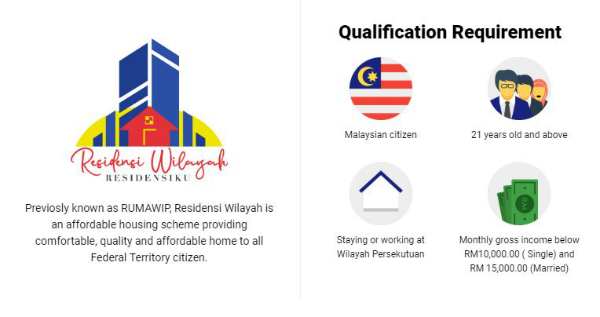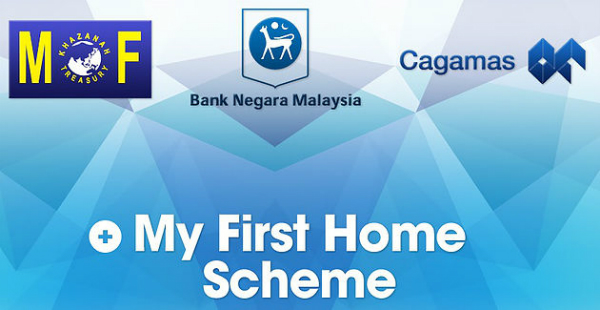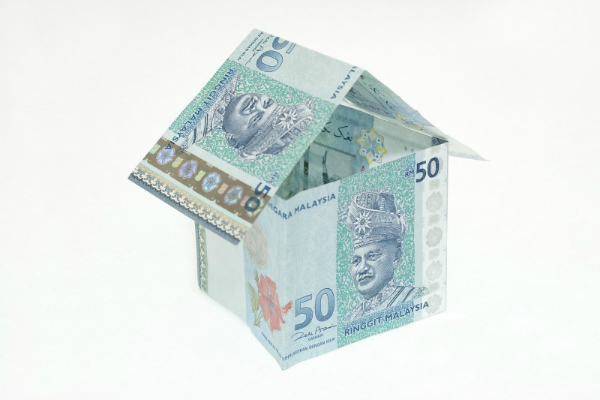According to PropertyGuru’s Consumer Sentiment Survey H1 2019, it has been shown that overall, Malaysians are satisfied with government approaches to bring affordable property to the people.
However, funnily enough, actual uptake of national affordable housing programmes is low, despite the demand for such initiatives.
For example, the most well-known scheme right now is PR1MA, but only 19% of the survey participants have applied for it!
So, if you’re actually on the lookout for an affordable home, here are some key things to consider before you decide on one particular scheme.
1. Explore the different housing schemes available
There are various affordable housing schemes available, so why not find out more about some of them? You might be pleasantly surprised at the quality homes with price tags that are within budget!
a) PR1MA (1Malaysia Housing Programme)
This scheme is ideal for young adults who have just graduated or started working. The properties are allocated through an open balloting process.
The prices of PR1MA properties can range from RM100,000 to RM400,000.
Eligibility Conditions:
- Malaysian citizens
- At least 21 years old
- Average monthly household income of between RM2,500 and RM15,000
- Don’t own more than one property
- A 10-year moratorium will be imposed, during which you can’t sell or transfer your property to another party without prior approval from PR1MA.
b) Residensi Wilayah (previously known as RUMAWIP)
Residensi Wilayah was once known as RUMAWIP, and the scheme offers stratified studio, one-bedroom, two-bedroom, and three-bedroom houses. These properties come in different sizes and prices.
As this scheme is targeted at low to middle-income workers, the properties are sold below market price.
The lowest-priced apartment once sold for RM63,000 (in Kuala Lumpur and Putrajaya), while the most expensive one costs up to RM300,000.
Eligibility Conditions:
- Malaysian citizens
- At least 18 years old
- Average monthly household income of RM10,000 for individuals and RM15,000 for married couples
- Must be living in Kuala Lumpur
c) MyHome
MyHome is run by the Ministry of Urban Wellbeing, Housing, and Local Government, as well as the Department of National Housing.
The properties cost between RM80,000 and RM300,000. And this is before the subsidy of RM30,000 offered to applicants!
On top of that, successful applicants don’t have to fork out for the usual 10% down payment as the government will cover that.
Eligibility Conditions:
- Malaysian citizens
- At least 18 years old
- Average monthly household income of between RM3,000 and R6,000
- Don’t own more than one property
- Only one application is allowed per family
d) Rumah Selangorku
Rumah Selangorku is a low-cost housing scheme intended for low and medium-income families living in Selangor. There are seven types of units, each of a different size.
Applicants are selected based on a merit system and will not be able to appeal any rejections. On the other hand, applicants who reject a successful application will get blacklisted for two years.
Eligibility Conditions:
- Malaysian citizens
- At least 18 years old
- Average monthly household income of less than RM10,000
- Don’t own a property in Selangor
e) Skim Rumah Pertamaku
Also known as My First Home Scheme, this policy caters to young adults who have just joined the workforce to purchase their first home.
With this scheme, successful applicants are entitled to access loan financing of up to 110% the price of a property!
The good thing about this scheme is that it allows homeowners to make instalments via monthly salary deduction. To apply for this scheme, you can head down to any participating bank.
Eligibility Conditions:
- Malaysian citizens
- Below 40 years old
- Average monthly household income of between RM3,000 and RM6,000
- Don’t own more than one property
- Only one application allowed per family
2. Getting a home loan
When you apply for a home loan, no matter if it’s for a regular property or one from an affordable housing scheme, there are two key things that a bank will look at:
- Debt Service Ratio (DSR)
- Credit score.
a) Debt service ratio (DSR)
In Malaysia, the Debt Service Ratio (DSR) is a means for banks to assess if you’re able to afford the loan you’re applying for. Here’s how the DSR is calculated:
(Total Monthly Commitments + Mortgage Loan) / Net Income
Examples of monthly commitments are car loans, credit card bills, and mortgage loan. The net income refers to the leftover income after deducting taxes and other monthly payables.
Try to maintain your DSR within the 30% to 40% range; the lower your DSR, the better! To improve your DSR, you can start by paying off big-ticket debts, or increasing your net income.
b) Credit score
Your CCRIS and CTOS reports can greatly affect your chances of getting a home loan. Credit scores are a way for banks to evaluate the potential risk of lending money to a borrower.
Some ways to improve your credit score include making prompt payments, having a stable stream of income, and minimising your debts.
Such practices could bump up your credit score, helping to prove that you’re a creditworthy applicant who is capable of repaying loans.
3. Down payment and other miscellaneous expenses
If you’re getting a new home, you usually have to save up towards a hefty down payment. Keep in mind that you’ll also have to fork out for other miscellaneous charges.
This includes legal fees, as well as bank processing fees for your home loan. But first, let’s start with the down payment.
In Malaysia, those buying a property are required to pay a minimum 10% down payment on their property purchase. However, this sum will be split into two payments.
The first is called “earnest deposit”, and for that, you’ll have to pay 2% of your down payment sum. This is just a precautionary measure for property sellers in case buyers change their minds.
The earnest deposit is presented together with your Letter of Offer to the property owner. The remaining 8% is subsequently paid after you’ve signed the Sale and Purchase Agreement (SPA).
The legal fees for SPA are calculated in the following manner:
|
Property Price
|
SPA Rates
|
|
First RM500,000
|
Property value x 1%
|
|
Subsequent RM500,000
|
Property value x 0.8%
|
|
Subsequent RM2,000,000
|
Property value x 0.7%
|
|
Subsequent RM2,000,000
|
Property value x 0.6%
|
|
Subsequent RM2,500,000
|
Property value x 0.5%
|
|
Total SPA fees payable = Sum of SPA rates | |
Apart from the down payment and SPA legal fees, these are some of the other fees you’ll need to fork out:
- Legal disbursement fee for SPA
- Legal fee for loan agreement
- Fee for transfer of ownership title
- Legal disbursement fee for loan facility agreement
- Government tax for legal agreements
- Processing fee for bank loan
You might be happy to know that in 2018, it was announced that those buying a property for the first time will be exempted from stamp duty for the following:
- Transfer of ownership title
- SPA
- Loan agreement
If these schemes still aren’t your cup of tea, why not check out check out the PropertyGuru EasyOwn campaign. EasyOwn is a collection of developer projects offering attractive deals and discount packages! Own Your Home now with top property offers on PropertyGuru EasyOwn.
Keep Track of New Launches
Visit our new launches page to find the new launch project of your dreams and submit an enquiry today.

Disclaimer: The information is provided for general information only. PropertyGuru International (Malaysia) Sdn Bhd makes no representations or warranties in relation to the information, including but not limited to any representation or warranty as to the fitness for any particular purpose of the information to the fullest extent permitted by law. While every effort has been made to ensure that the information provided in this article is accurate, reliable, and complete as of the time of writing, the information provided in this article should not be relied upon to make any financial, investment, real estate or legal decisions. Additionally, the information should not substitute advice from a trained professional who can take into account your personal facts and circumstances, and we accept no liability if you use the information to form decisions.









